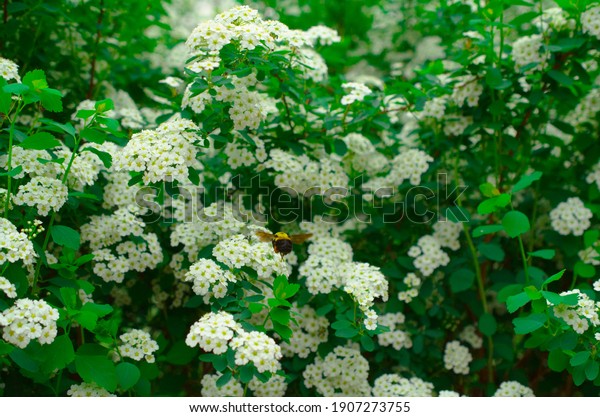The Spirea Reeves is a beloved flowering shrub known for its gorgeous white blooms. This easy-care plant brings elegant beauty to gardens and landscapes In this article, we’ll explore the Spirea Reeves including its features, growing conditions, care tips, and how to use it in garden designs.
Overview of Spirea Reeves
The Spirea Reeves, also known as Bridalwreath Spirea, is a deciduous shrub prized for its early spring blooms It belongs to a diverse group of shrubs in the Spirea genus, which contains over 80 species
This shrub grows 4-6 feet tall and wide, with a rounded, vase-shaped form. The leaves are oval, bright green, and arranged alternately along arching stems.
But the real showstopper is the flowers. In early to mid spring, the Spirea Reeves erupts with dense clusters of tiny white blooms all along the bare branches. The flowers resemble drifted snow or frothy lace. Their sweet almond fragrance adds to the delightful spring display.
Growing Conditions for Spirea Reeves
One reason the Spirea Reeves is so popular is its adaptability. Here are its ideal growing conditions:
- Hardiness Zones: Zones 4-9
- Sun exposure: Full sun to partial shade
- Soil needs: Average, well-draining soil
- pH range: Neutral to slightly alkaline
- Drought tolerance: Moderate drought tolerance once established
The Spirea Reeves is hardy even in cold climates. It flourishes in most soil types and varying moisture levels. While it prefers full sun, it will tolerate light shade.
This versatility makes it suitable for a wide range of climates and landscapes. Just avoid soggy, poorly-draining soils which may cause root rot.
Care Tips for Spirea Reeves
Caring for the Spirea Reeves is quite simple. Just provide the basics:
- Watering: Water regularly until established, then only during drought.
- Fertilizer: Apply a balanced fertilizer in early spring.
- Pruning: Prune right after flowering to shape and rejuvenate. Remove up to 1/3 of oldest branches.
- Maintenance: Remove spent blooms before seed heads form. Divide congested plants in fall every 3-5 years.
- Pest/problems: No serious issues. Can get aphids, scale, or powdery mildew.
With just routine pruning, occasional watering and fertilizing, the Spirea Reeves will thrive season after season.
How to Use Spirea Reeves in Garden Designs
There are endless ways to showcase the beautiful Spirea Reeves in gardens and landscapes. Here are some ideas:
- Plant as a focal point shrub in mixed borders or island beds
- Use as an informal flowering hedge or screen
- Feature in cottage gardens, rock gardens, or wildflower meadows
- Group in massed plantings for a stunning spring flower display
- Grow as a specimen shrub in containers on patios or porches
- Plant singly or in pairs flanking walkways and entries
- Place along foundations or property lines
- Include in rain gardens, xeriscapes, or nature-style plantings
The Spirea Reeves pairs nicely with many plants. Combine with late spring bulbs like tulips or alliums, peonies, salvia, catmint, iris, coral bells, astilbe, and more.
Popular Varieties of Spirea Reeves
While the species itself is most common, there are some cultivated varieties of the Spirea Reeves to choose from:
- Bridalwreath – Classic heirloom with dense white blooms, rounded form. Grows to 6 feet.
- Froebelii – A dwarf variety reaching just 3-4 feet tall and wide. Profuse flowers.
- Crispa – Features curled, crepe-like flowers along the branches. Grows to 5 feet.
- Dallas Blues – Blue-gray foliage provides nice contrast to the white blooms. Grows 4 feet tall and wide.
- Snowmound – A compact variety that grows just 2-3 feet tall. Very hardy.
Add Delightful Spring Blooms with Spirea Reeves
With its easy care, vivid floral display, and versatility, it’s no wonder the Spirea Reeves remains a cherished flowering shrub generation after generation. Let this beauty bring a touch of spring magic to your own garden!
Everything You Need to Know About Spirea
FAQ
How do you care for a Reeves spirea?
How long do white spirea bloom?
Where is the best place to plant a spirea bush?
Should spirea be cut back every year?
- A Complete Guide to Caring for Yuki Cherry Blossom Shrub - January 23, 2025
- Identifying Red Hot Poker Seeds: What to Look For When Harvesting Torch Lily Pods - January 23, 2025
- A Complete Guide to Harvesting Evening Primrose Seeds - January 23, 2025

